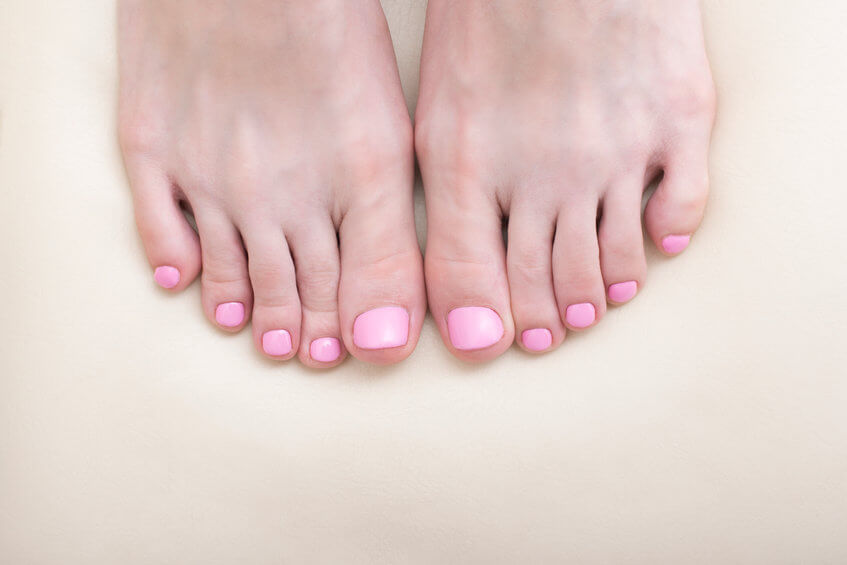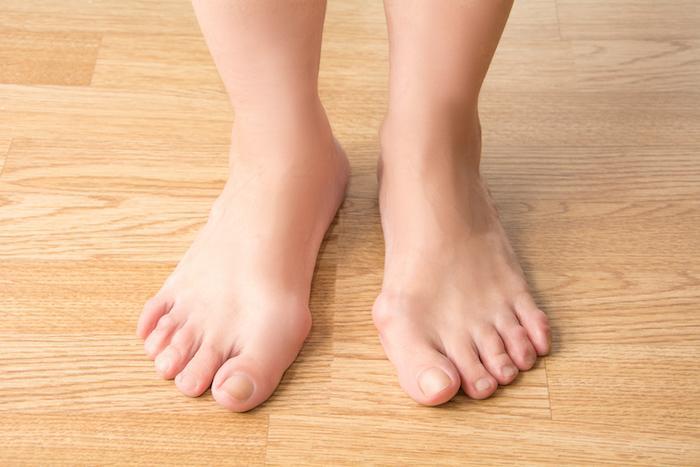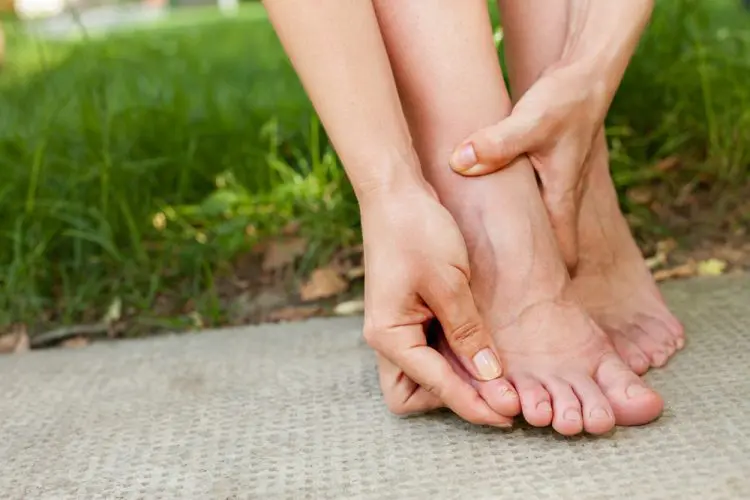The size of your pinky toenail can be smaller than others due to various factors. Genetics play a significant role, determining individual differences in toenail size.
Developmental reasons or injuries during growth stages can affect the toenail’s size. Infections or medical conditions may also impact nail growth. Consulting a podiatrist can offer insights or treatments if concerns about the size or appearance of your pinky toenail arise.
How Genetics and Development Impact Toenail Size?

These detailed factors provide insight into the complexity of toenail development and how genetics, development, trauma, and medical conditions collectively influence the size and appearance of the pinky toenail and other toenails.
Genetics
Toenail size is largely determined by genetic factors, leading to variations within families.
Specific genes dictate the rate of toenail growth, thickness, and overall size.
Differences in these genetic traits contribute to individuals having varying toenail sizes, including smaller pinky toenails.
Developmental Factors
During fetal development, limited space in the womb can affect the growth of toenails, including the pinky toenail. Factors such as crowding or positioning in the uterus can influence how toenails develop, potentially resulting in smaller sizes.
Genetic predispositions combined with developmental constraints might contribute to smaller toenails.
Trauma or Injury
Trauma or injuries to the toes or toenails during childhood or later stages of life can hinder proper toenail growth. Severe injuries might permanently damage the nail matrix, leading to irregular or stunted growth of the toenail.
The impact of trauma varies; however, it can affect the overall appearance and size of the toenail, including the pinky toenail.
Infections or Medical Conditions
Infections like fungal issues or medical conditions affecting the nail bed can impact toenail growth. Fungal infections can distort the nail, causing it to grow irregularly or appear smaller.
Certain medical conditions affecting blood circulation or skin health can indirectly affect the growth and appearance of toenails, potentially resulting in smaller sizes.
What Affects Toenail Growth?

These intricate details shed light on how genetic, developmental, traumatic, and medical factors collectively contribute to toenail size and appearance, including the variability in the size of the pinky toenail among individuals.
Genetics
How Genetics Determine Toenail Characteristics
Genetics play a pivotal role in toenail characteristics, regulating factors such as thickness, texture, and growth rate.
Specific genes control the production of proteins essential for nail development, influencing how toenails form and grow.
Genetic variations result in diverse toenail shapes and sizes among individuals, including differences in the pinky toenail size.
Individual Variations in Toenail Sizes due to Genetic Factors
Genetically determined traits contribute to variations in toenail sizes among people within families or populations.
Different combinations of inherited genes influence the rate of nail growth and thickness, leading to diverse toenail sizes.
Even subtle genetic variations can impact the size and appearance of toenails, including the smaller size of the pinky toenail in some individuals.
Developmental Factors
Impact of Insufficient Space During Fetal Development
Limited space in the womb can affect the development of toenails, including the pinky toenail, leading to variations in size. Inadequate room or positioning in the uterus might restrict the proper formation and growth of toenails during fetal development.
Genetic factors interacting with developmental constraints contribute to the size differences observed in toenails.
Influence of Genetic Factors on Toenail Growth
Genetic predispositions interact with developmental factors, influencing toenail growth patterns. Genetic traits impacting the nail matrix and keratin production can affect the rate and quality of toenail growth.
The interplay between genetics and developmental aspects significantly contributes to variations in toenail sizes.
Trauma or Injury
Effects of Injuries During Childhood or Later Stages
Trauma or injuries to the toes or toenails, whether through accidents or repeated pressure, can hinder normal nail growth. Severe injuries might damage the nail matrix, causing irregular growth or leading to smaller and misshapen toenails.
The extent and nature of the injury play a role in determining the impact on toenail growth and appearance.
Resulting Abnormalities or Changes in Toenail Growth
Trauma-induced damage can lead to nail abnormalities such as ridges, discoloration, or malformation, affecting overall toenail size. Scarring or alterations in the nail bed due to injuries can cause permanent changes in the growth pattern of toenails.
The response of the nail matrix to trauma determines the subsequent growth and appearance of the toenail.
Infections or Medical Conditions
Role of Infections Like Fungal Issues on Toenail Growth
Fungal infections affect the nail bed, leading to changes in toenail texture, thickness, and growth rate. Persistent fungal infections can distort the nail, causing it to grow irregularly or appear smaller. Fungal issues compromise the overall health of the toenail, impacting its growth and size.
Medical Conditions Affecting the Nail Bed and Growth
Certain medical conditions affecting blood circulation, skin health, or immune responses can indirectly influence toenail growth. Conditions like psoriasis or eczema that affect the nail bed can cause abnormalities in toenail growth and potentially result in smaller sizes.
The overall health of the individual and their systemic conditions can have an impact on the health and growth of toenails.
How to Address Small Toenail Concerns?
The importance of recognizing abnormalities, seeking specialized help, and exploring available treatments or guidance assists individuals in addressing concerns related to small toenails effectively.
Recognizing Abnormalities or Discomfort Related to Small Toenails
Abnormalities in toenail size, shape, color, or texture might indicate underlying issues.
Discomfort, pain, inflammation, or recurrent infections associated with small toenails warrant
attention.
Observing changes in the pinky toenail or other toenails prompts a closer evaluation for potential concerns.
Importance of Consulting a Podiatrist or Healthcare Professional:
Podiatrists specialize in foot and ankle health, including diagnosing and treating toenail abnormalities. Healthcare professionals can conduct thorough examinations to identify underlying causes of small toenails.
Consulting experts is crucial for accurate diagnosis, especially when symptoms or concerns persist.
Available Treatments or Guidance for Toenail Concerns:
- Treatment options vary based on the underlying cause of small toenails.
- Fungal infections might require antifungal medications or topical treatments to restore nail health.
- Trauma-induced nail abnormalities might necessitate specific interventions or therapies.
- Podiatrists can provide guidance on proper foot care, trimming techniques, and preventive measures to maintain toenail health.
- In severe cases or persistent concerns, surgical interventions might be considered for corrective purposes.
- Professional advice ensures appropriate management tailored to individual toenail conditions.
FAQ’s
Why does my toenail look smaller?
Toenails might appear smaller due to genetic factors, developmental constraints during fetal growth, trauma, infections, or medical conditions impacting their growth.
Is it normal to not have a pinky toenail?
It can be normal for some individuals not to have a pinky toenail due to genetic variations or developmental factors that affect its growth.
What do healthy toes look like?
Healthy toes typically have smooth nails, no discoloration or deformities, and exhibit regular growth without pain or discomfort.
What are Hollywood toes?
Hollywood toes refer to a specific style of pedicure where the nails are elongated and often painted in a French manicure style, popularized by celebrities.
Does the pinky toe matter?
Despite its size, the pinky toe plays a role in maintaining balance and stability while walking, contributing to overall foot function.
How do I fix my toe shape?
Depending on the issue, corrective measures for toe shape might include wearing proper footwear, orthotics, exercises, or, in severe cases, surgical intervention.
Final Words
In conclusion, the size of your pinky toenail, like other toenails, can be influenced by various factors. Genetics play a big role, determining how your toenails grow and look. Sometimes, during development in the womb, limited space might affect the toenails, making them smaller. Injuries or infections can also change how your toenails grow. It’s important to notice any changes or discomfort with your toenails and seek advice from a podiatrist or a healthcare professional. They can check for any problems and suggest the right treatments or care. Taking care of your toenails and seeking help when needed ensures you keep your feet healthy and comfortable.

